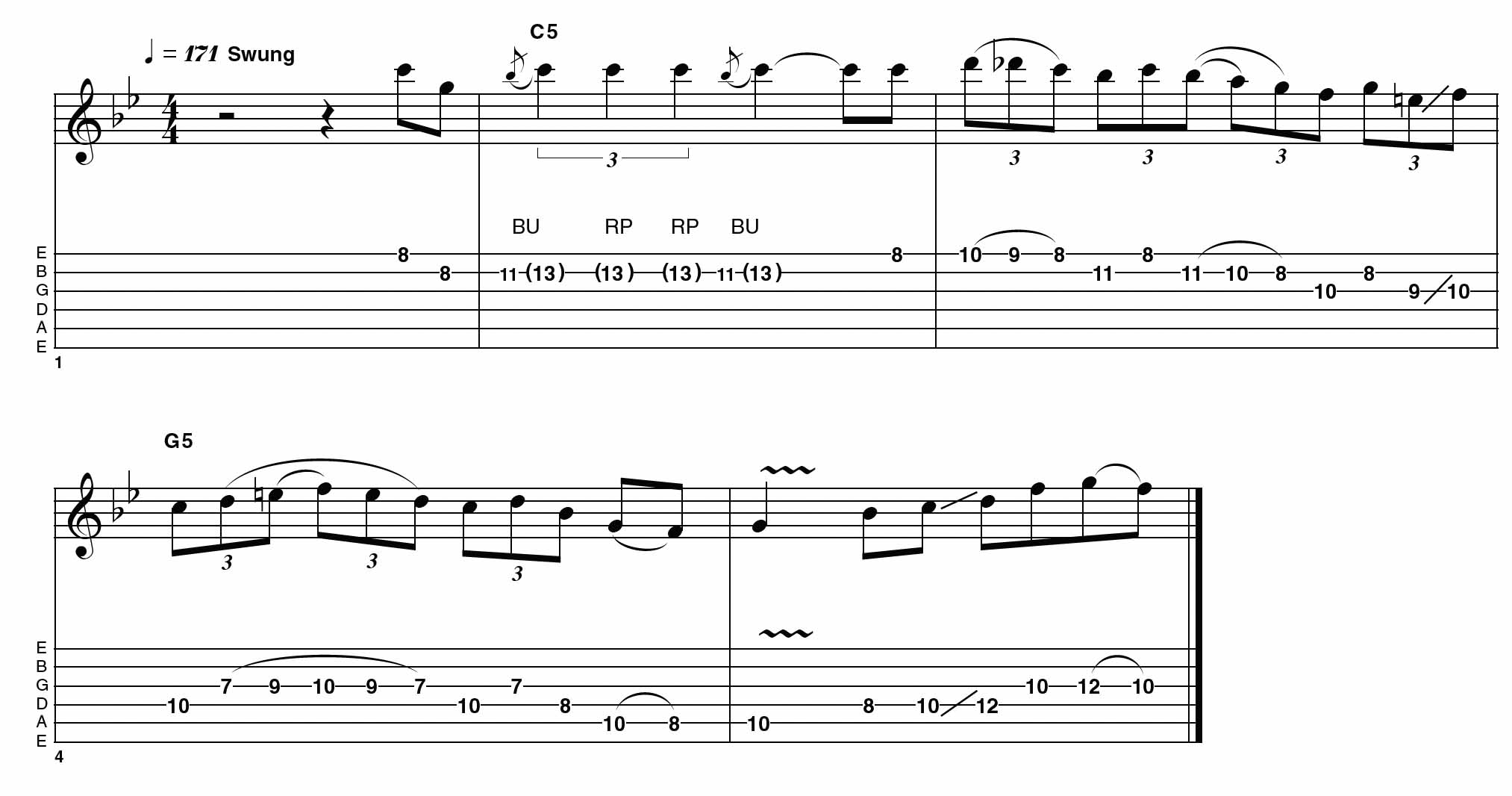How to play blues like Ritchie Blackmore
This solo workout goes deep into Deep Purple MkII-era Blackmore and unpacks his electric blues style in detail

Ritchie Blackmore has long been associated with the neoclassical/baroque lines that inspired the young Yngwie Malmsteen and Randy Rhoads.
Indeed, he has continued on this path somewhat with the Renaissance-inspired Blackmore’s Night, though this generally involves the use of acoustic instruments rather than his trademark Strat. However, Ritchie’s early influences were very much in the blues vein, particularly Eric Clapton, and this remained a prominent feature in his riffs, melodies and solos throughout the Deep Purple and Rainbow years.
Watching Ritchie’s technique closely reveals a surprisingly delicate touch and refined technique (when not smashing Strats against a wall of burning Marshall stacks!), which undoubtedly served him well in his career as a studio/session man in the '60s.
This solo takes its inspiration from the Deep Purple ‘Mark II’ era circa 1972, with a particular nod to Lazy, a lengthy ‘showcase vehicle’ with extended solos and blues-based riffs.
Though the solo is improvised and not intended to be the last word in how to sound exactly like Blackmore, I’ve consciously included a few ideas from various solos, including contrasting long and staccato notes, repeated bends, arpeggio fragments and wide vibrato with the bar.
One feature I was particularly keen to incorporate was the way Ritchie would phrase things surrounding the b5 (in this case Db), moving out of the usual blues scale positions to use something more akin to the natural minor scale.
I believe this alone contributes an important insight into how Ritchie thinks about things in a different way to a more ‘pentatonic-based’ player – not that there is anything inherently inferior or superior about either approach! I plugged into the studio Vox AC15 with a bit of extra push from an Ibanez TS9.
All the latest guitar news, interviews, lessons, reviews, deals and more, direct to your inbox!
Apparently, Ritchie liked to use a Vox for recording, but favoured Marshalls for getting things across live. Hope you enjoy and see you next time!
Example 1
The first example demonstrates how Ritchie would construct his solos, setting the scene and building rather than bursting in with indecent haste! After the long sustained root in bar 1, you can clearly see and hear the G blues scale at work throughout.
Bar 2 sees the beginning of a series of repeated bends, before taking a more Clapton-inspired direction in the last two bars – particularly highlighted with the use of quarter-tone bends.
Example 2
Starting with a reiteration of the repeated bends idea, this example then moves on to some rapid hammer-on/pull-offs on the third string, making use of the open G as a root note. If you’re quick, you’ll catch a hint of this in Ritchie’s solo at the end of Since You’ve Been Gone.
We’re moving between positions here, switching between a G minor pentatonic (or blues scale) and G natural minor approach; watch out for this throughout the solo.
Example 3
Rejoining the action later in the solo, we have a shape 3 blues scale run, incorporating the b5 by playing chromatically through three frets on the top E before descending down through the pattern, referencing an F from what might be considered G Dorian then incorporating a G minor arpeggio right at the end.
These considerations don’t need to be at the forefront of your mind while playing, but it’s really beneficial to piece together and understand for future ideas.
Example 4
Another fusion of approaches her, starting with a Child In Time-style repeated arpeggio, we move on to a descending G Dorian (within the ‘framework’ of a shape 4 G minor pentatonic) in groups of six, a couple of four, then a group of five.
This wasn’t deliberate – it was more about where I wanted the run to land at the next bar – but this does demonstrate the way Ritchie incorporates ‘tricky’ phrases into his solos and lines.
Hear it here
Deep Purple – Machine Head
Recorded in 1971, this album still stands tall as a pioneering fusion of blues and rock, with some strong hints at what was to come later in terms of neoclassical touches, particularly evident on Highway Star. Maybe I’m A Leo combines a bouncing funk/blues riff with Ritchie’s unique take on a bluesy solo.
We all know about Smoke On The Water… so we’ll skip ahead to Lazy for the last word in the fusion of classical, blues and rock with some exemplary playing in Ritchie’s extended solos.
Deep Purple – Made in Japan
Spawning the priceless line “everything louder than everything else”, this album also showcases Ritchie at the top of his game and gives us an insight into how he translated some of his complex lines live using the more forceful sound of his Marshall stacks.
Comparing Highway Star, Child In Time and Lazy is really informative, particularly the extended improvs on Lazy, which also show what an important ingredient the chemistry of the whole band was.
Rainbow – Down to Earth
An album that starts with a riff like All Night Long should catch the attention of any blues or rock guitarist immediately!
Rainbow took a more mainstream – some might even say ‘pop’ rock – approach, but in no way did this compromise Ritchie’s memorable solos in that first track, or the classic Since You’ve Been Gone. Danger Zone features a solo with some definite Highway Star-style harmony lines along with some classical influenced arpeggios.
As well as a longtime contributor to Guitarist and Guitar Techniques, Richard is Tony Hadley’s longstanding guitarist, and has worked with everyone from Roger Daltrey to Ronan Keating.





